



India and ASEAN share a Comprehensive Strategic Partnership central to India’s Act East Policy and Indo-Pacific vision. Focused on connectivity, maritime security, and trade, it faces challenges from China’s assertiveness and project delays. Strengthening digital, maritime, and supply chain cooperation is key to regional stability and growth.
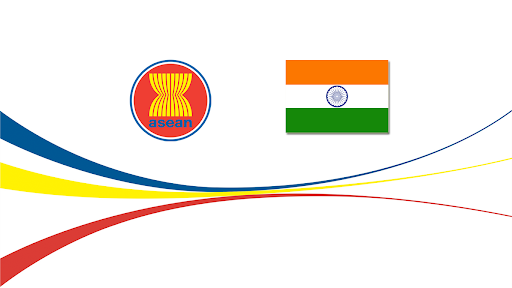
Copyright infringement not intended
Picture Courtesy: ddindia
|
Read all about: India-ASEAN Relations |
Founding and Membership:
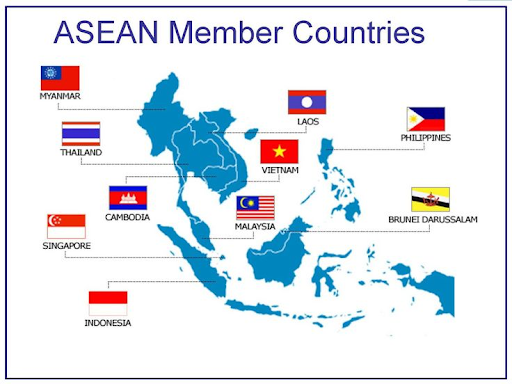
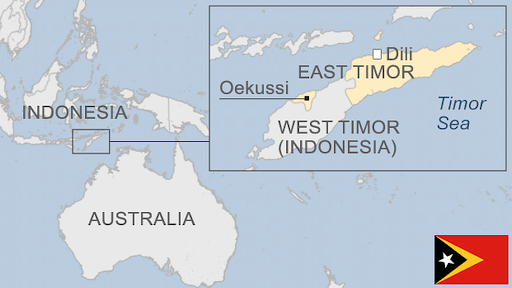
Objectives and Principles:
India initiated formal engagement with ASEAN under the 'Look East Policy' in the early 1990s, progressing to a Dialogue Partner in 1996 and a Summit-level Partner in 2002.
This phase focused on establishing trade and economic linkages with Southeast Asian countries.
Elevation to Strategic Partnership (2012)
India-ASEAN relations were elevated to a Strategic Partnership during the 20th anniversary Commemorative Summit in New Delhi in 2012.
Act East Policy (2014)
Prime Minister Narendra Modi rebranded the 'Look East Policy' as the 'Act East Policy' in 2014, to focus on connectivity, commerce, culture, and capacity building with the extended neighborhood in the Asia-Pacific region.
Comprehensive Strategic Partnership (2022)
In 2022, ASEAN-India relations were elevated to a Comprehensive Strategic Partnership, coinciding with the "ASEAN-India Friendship Year." This upgrade strengthened collaboration across political, security, economic, and socio-cultural areas.
Economic Powerhouse
Major Trading Partner: ASEAN is India's fourth-largest trading partner, accounting for about 11% of India's global trade. Bilateral trade reached $123.12 billion in FY 2024-25. (Source: PIB)
Investment Hub: Between 2000 and 2023, India received over $156 billion in Foreign Direct Investment (FDI) from ASEAN countries. Singapore is India's largest contributor of FDI inflows. (Source: Department for Promotion of Industry and Internal Trade)
Market Access: ASEAN's collective GDP exceeding $4.5 trillion and a population of over 700 million offer a vast market for Indian exports, especially in engineering goods, pharmaceuticals, and automotive components.
Strategic and Geopolitical Imperative
Pillar of Act East Policy: ASEAN is key to India's 'Act East Policy,' serving as a gateway to the Indo-Pacific.
ASEAN Centrality: India supports ASEAN's central role in regional security through the East Asia Summit (EAS), ASEAN Regional Forum (ARF), and ASEAN Defence Ministers' Meeting Plus (ADMM+).
Indo-Pacific Vision: India's Indo-Pacific Oceans Initiative (IPOI) aligns with ASEAN's Outlook on the Indo-Pacific (AOIP), promoting a free, open, inclusive, and rules-based regional order.
Counterbalancing Influence: A strong India-ASEAN partnership counters China's regional assertiveness.
Connectivity Hub: ASEAN is key to India's goal of enhancing regional connectivity across South and Southeast Asia via physical, digital, and people-to-people links.
Security Cooperation: Strengthens maritime security, counter-terrorism efforts, and humanitarian assistance and disaster relief (HADR) capabilities in the Indian Ocean and South China Sea.
Cultural and People-to-People Ties: Shared Buddhist heritage and Indian diaspora strengthen historical, cultural ties, promoting mutual understanding and cooperation.
Why is India Important for ASEAN?
Economic Diversification and Growth: India provides ASEAN nations with an alternative market and investment source, diversifying their economic ties.
Strategic Balancing Role: India provides a strategic counterweight to Chinese rising powers in the Indo-Pacific, reinforcing ASEAN's autonomy in regional architecture.
Connectivity Provider: India's connectivity projects, like the Trilateral Highway, offer infrastructure development and integration prospects, especially for landlocked and less-developed ASEAN countries.
Development and Capacity Building: India is collaborating with ASEAN by sharing its expertise in digital transformation, renewable energy, and its Digital Public Infrastructure (DPI) stack, offering scholarships and training programs to promote inclusive growth.
Voice of the Global South: India, a leading voice for the Global South, uses its role in multilateral forums to advocate developing nations' concerns and advocate for a more equitable global order.
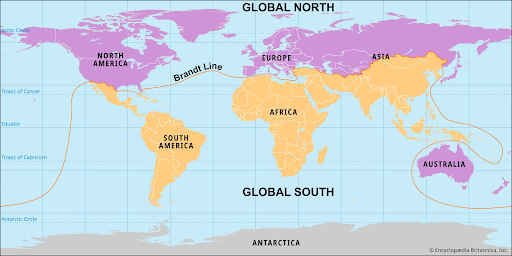
Disaster Resilience and HADR: India's 'first responder' role in neighborhood crises enhances regional disaster preparedness and humanitarian aid.
What are the Challenges in India-ASEAN Relations?
Trade Imbalances and AITIGA Issues
India's trade deficit with ASEAN hit $45.21 billion in FY 2024-25, largely due to AITIGA issues like lax rules of origin, non-tariff barriers, and slow tariff adjustments.
Slow Implementation of Connectivity Project
The India-Myanmar-Thailand Trilateral Highway and Kaladan Multi-Modal Transit Transport Project are experiencing delays, with only 70% of the highway finished by early 2025 due to Myanmar's political instability, funding issues, and bureaucratic obstacles.
Geopolitical Complexities and China Factor
ASEAN's economic reliance on China ($702 billion trade vs India's $123 billion in 2023-24) limits strategic cooperation, particularly in areas seen to oppose China. India's Quad membership also concerns ASEAN regarding its centrality.
Strategic Gaps
India, ASEAN, and individual ASEAN members hold differing perceptions of India's role and desired engagement, with some preferring limited functional cooperation over deeper strategic alignment.
ASEAN Not a Single Market
Unlike the EU, ASEAN's ten diverse economies present India with trade and investment challenges due to varied market access, customs, non-tariff barriers, and restrictions on professional, capital, and goods movement.
Limited Defence Cooperation
While ADMM+ and maritime exercises are increasing, some ASEAN states' differing security priorities and economic ties with China, hinder defense collaboration.
Way Forward for Strengthening India-ASEAN Relations
Expedite AITIGA Review for Mutual Benefit
India and ASEAN should complete their AITIGA review by 2025 to establish stricter rules of origin, ensure fair tariffs, and eliminate non-tariff barriers, to balance trade, ensure reciprocity, and reduce India's trade deficit.
Accelerate Connectivity Projects with Innovative Financing
Accelerate India-Myanmar-Thailand Trilateral Highway and Kaladan Multi-Modal Transit Transport Project by addressing delays through PPPs and multilateral funding.
Prioritize alternative Myanmar routes, extending corridors to Cambodia, Laos, and Vietnam for a Mekong-India Economic Corridor.
Deepen Digital and Green Cooperation
Leverage Digital Public Infrastructure (DPI) stack and expertise in fintech, AI, and e-governance to aid ASEAN's digital transformation.
Expand collaboration in renewable energy, green hydrogen, and climate-resilient infrastructure, aligning with global sustainability goals.
Enhance Maritime Security and Blue Economy
Capitalize on the "ASEAN-India Year of Maritime Cooperation 2026" to expand joint maritime exercises, improve underwater domain awareness, and offer logistics and maintenance, repair, and overhaul (MRO) support.
Address non-traditional threats like piracy, illegal fishing, and drug trafficking collaboratively, reinforcing a rules-based maritime order.
Strengthen People-to-People and Cultural Ties
Increase exchanges through expanded scholarships, youth summits, cultural festivals, and research collaborations at institutions like Nalanda University.
Focus on Emerging and Niche Sector
Explore cooperation in advanced manufacturing, space technology, rare earths, and critical minerals, and extend "semiconductor diplomacy" to more ASEAN nations beyond Malaysia and Singapore.
The India-ASEAN Partnership is vital for global stability, especially in Asia and the Indo-Pacific. It needs to bridge economic disparities, enhance connectivity, and boost digital, green energy, and maritime security cooperation to tackle geopolitical issues. A strong partnership reinforces the rules-based regional order, promoting global peace and prosperity.
Source: PIB
|
PRACTICE QUESTION Q. Despite historical and cultural ties, India-ASEAN economic engagement remains below potential. Critically analyze the challenges and suggest measures for boosting trade and investment. 250 words |
India and ASEAN established their relationship in 1992, progressing from a Sectoral Dialogue Partner to a full Dialogue Partnership in 1995, a Summit-level Partnership in 2002, and finally a Comprehensive Strategic Partnership in 2022, marking 30 years of their association.
India's Act East Policy, launched in 2014 by Prime Minister Narendra Modi, is an evolution of the earlier "Look East Policy." It represents a sustained and active engagement with the Indo-Pacific, prioritizing ASEAN, and is based on four pillars: connectivity, commerce, culture, and capacity building.
India considers the South China Sea a part of the global commons. India advocates for freedom of navigation and overflight and the settlement of disputes in accordance with international law, particularly the UN Convention on the Law of the Sea (UNCLOS). While India does not take a position on the territorial claims, it has become more vocal in recent years in response to China's assertive actions.


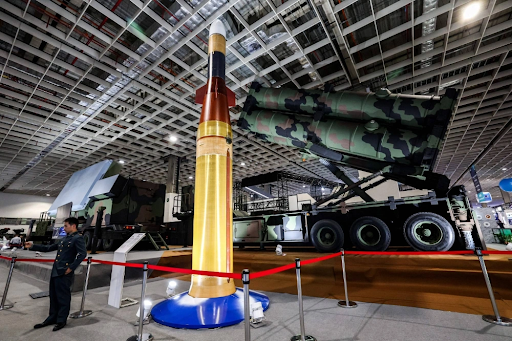
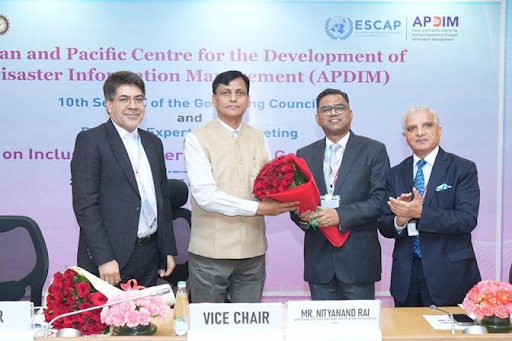



© 2025 iasgyan. All right reserved